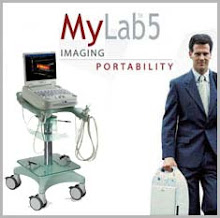A relatively simple and practical thyroid imaging reporting and data system (TIRADS) based on the number of suspicious ultrasound (US) features can be applied to risk stratify thyroid nodules, according to a study published in the September issue of Radiology.
Widespread use of ultrasound has resulted in an increase in the detection of thyroid nodules. However, less than 10 percent of these nodules are malignant.
Deciding which patients should undergo fine needle aspiration biopsy (FNAB) presents a diagnostic dilemma as the same nodule may be classified differently using different guidelines. “Appropriate criteria are necessary to avoid an increase of rather unnecessary benign cytologic results in thyroid nodules,” wrote Jin Young Kwak, MD, from the department of radiology, research institute of radiological science at Yonsei University of College of Medicine in Seoul, South Korea.
Previous TIRADS have been complex and difficult to apply in practice, according to the researchers. Thus, they sought to develop a practical TIRADS to stratify malignancy risk and devised a retrospective study of 1,658 thyroid nodules which were biopsied via ultrasound guidance from May 2008 to December 2008. The study population included 1,373 women and 265 men.
Seven radiologists performed real-time ultrasound on the patients and categorized nodules according to the internal component, echogenicity, margins, evidence of calcifications and shape. Following the ultrasound study, the same radiologists performed US-guided FNAB. Results were analyzed and compared according to sex and ultrasound features.
Widespread use of ultrasound has resulted in an increase in the detection of thyroid nodules. However, less than 10 percent of these nodules are malignant.
Deciding which patients should undergo fine needle aspiration biopsy (FNAB) presents a diagnostic dilemma as the same nodule may be classified differently using different guidelines. “Appropriate criteria are necessary to avoid an increase of rather unnecessary benign cytologic results in thyroid nodules,” wrote Jin Young Kwak, MD, from the department of radiology, research institute of radiological science at Yonsei University of College of Medicine in Seoul, South Korea.
Previous TIRADS have been complex and difficult to apply in practice, according to the researchers. Thus, they sought to develop a practical TIRADS to stratify malignancy risk and devised a retrospective study of 1,658 thyroid nodules which were biopsied via ultrasound guidance from May 2008 to December 2008. The study population included 1,373 women and 265 men.
Seven radiologists performed real-time ultrasound on the patients and categorized nodules according to the internal component, echogenicity, margins, evidence of calcifications and shape. Following the ultrasound study, the same radiologists performed US-guided FNAB. Results were analyzed and compared according to sex and ultrasound features.
To continue reading the article, please click on the link below:


No comments:
Post a Comment
Comments with foul language, derogatory remarks, or links will be omitted.